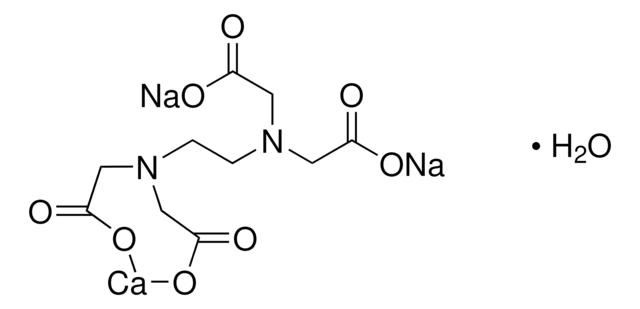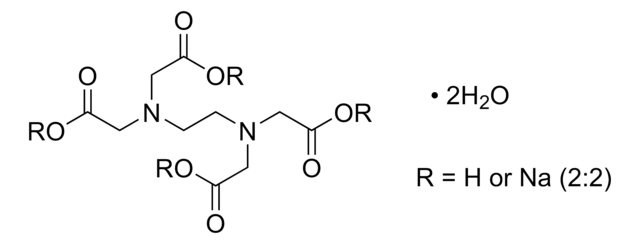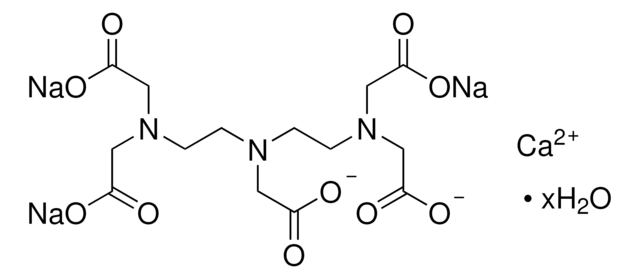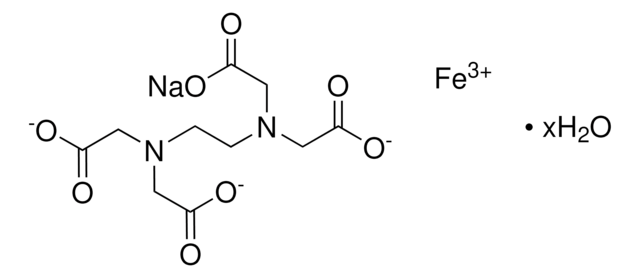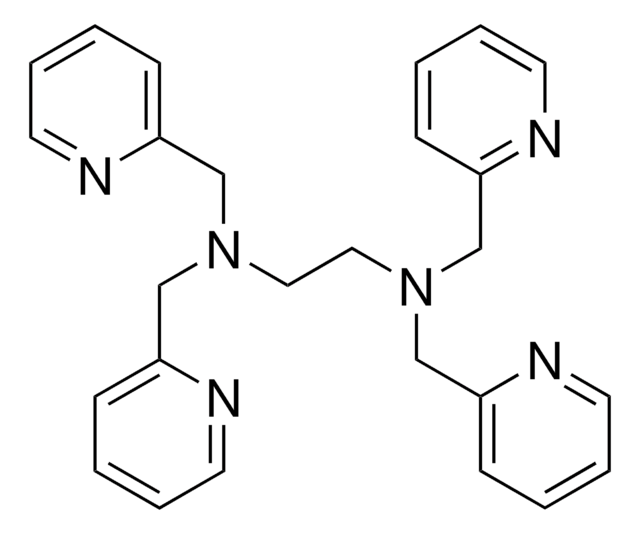ED2SC
Ethylenediaminetetraacetic acid calcium disodium salt hydrate
Synonym(s):
Calcium disodium ethylenediaminetetraacetate hydrate
About This Item
Recommended Products
biological source
synthetic
Quality Level
Assay
97.0-102.0% (titration)
form
powder
reaction suitability
reagent type: chelator
solubility
water: 1.6 g/10 mL, clear, colorless to faintly yellow
storage temp.
room temp
SMILES string
O.[Na+].[Na+].[Ca++].[O-]C(=O)CN(CCN(CC([O-])=O)CC([O-])=O)CC([O-])=O
InChI
1S/C10H16N2O8.Ca.2Na.H2O/c13-7(14)3-11(4-8(15)16)1-2-12(5-9(17)18)6-10(19)20;;;;/h1-6H2,(H,13,14)(H,15,16)(H,17,18)(H,19,20);;;;1H2/q;+2;2*+1;/p-4
InChI key
JHECKPXUCKQCSH-UHFFFAOYSA-J
Looking for similar products? Visit Product Comparison Guide
Related Categories
Application
- MIL-101(Fe) based biomass as permeable reactive barrier applied to EK-PRB remediation of antimony contaminated soil.: The research utilizes EDTA as a chelating agent to enhance the performance of a MIL-101(Fe) based reactive barrier for the electrokinetic remediation of antimony-contaminated soil (Wang et al., 2023).
- Proteomic signatures of synergistic interactions in antimicrobials.: This proteomics study investigates the synergistic interactions of antimicrobials, highlighting the role of EDTA in enhancing antimicrobial efficacy by disrupting microbial cell membranes (Zhou et al., 2023).
- Rapid and zero-cost DNA extraction from soft-bodied insects for routine PCR-based applications.: This study presents a novel method for DNA extraction using EDTA, which simplifies and reduces the cost of DNA extraction from soft-bodied insects for PCR applications (Jangra and Ghosh, 2022).
Signal Word
Warning
Hazard Statements
Precautionary Statements
Hazard Classifications
Eye Irrit. 2 - Skin Irrit. 2 - STOT SE 3
Target Organs
Respiratory system
Storage Class Code
11 - Combustible Solids
WGK
WGK 2
Flash Point(F)
Not applicable
Flash Point(C)
Not applicable
Personal Protective Equipment
Certificates of Analysis (COA)
Search for Certificates of Analysis (COA) by entering the products Lot/Batch Number. Lot and Batch Numbers can be found on a product’s label following the words ‘Lot’ or ‘Batch’.
Already Own This Product?
Find documentation for the products that you have recently purchased in the Document Library.
Customers Also Viewed
Our team of scientists has experience in all areas of research including Life Science, Material Science, Chemical Synthesis, Chromatography, Analytical and many others.
Contact Technical Service